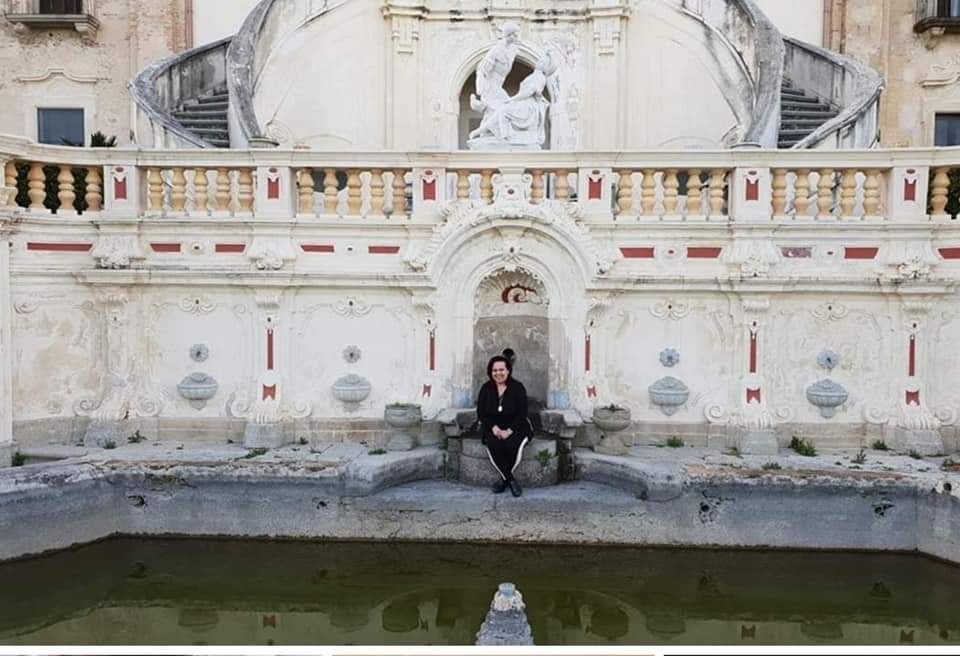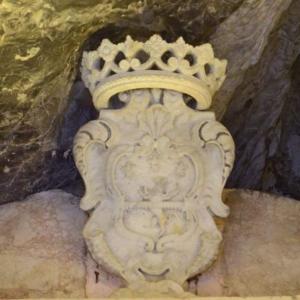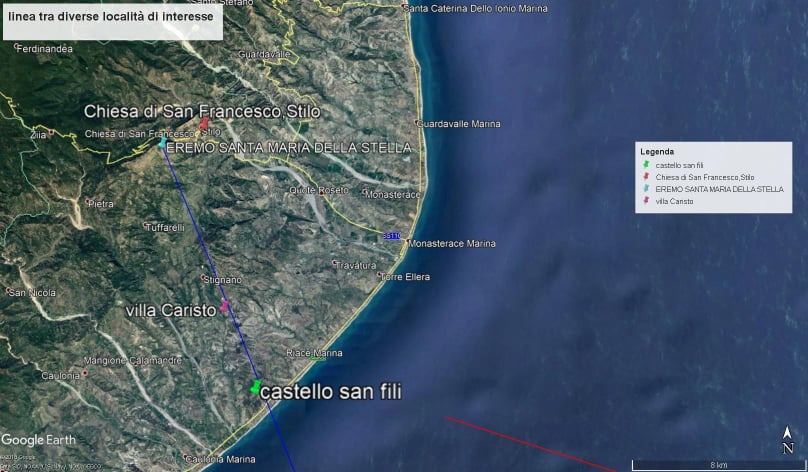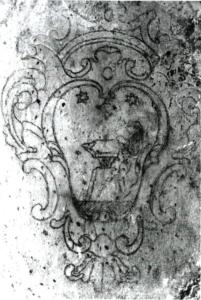Do you know the Ionian coast of Calabria? Do you know what the Holy Grail is?
A mysterious alignment unites and associates the Sanctuary of Monte Stella in Pazzano, Villa Caristo, one of the most beautiful in the region in Baroque style, the Castle of San Fili in Stignano and the Church of San Francesco in Stilo.
It is a link discovered a short time ago by a descendant of the Lamberti family who for centuries has been one of the leaders of the social life of this part of Calabria.

Cinzia Lamberti, who calls herself Pantaleone Lamberti Spadei in honour of her grandfather and many other ancestors, has found on all these 4 sites connections with the symbolism of the Holy Grail, an element that has enlivened stories of mystery throughout the West being identified with the cup that was used by Jesus during the last supper and which Joseph of Arimathea then used to collect the blood of Christ after his crucifixion.
And that there is a single design in the choice of these signs is also explained by the fact that all the sites are attributable to the Lamberti family and therefore to someone who perhaps wanted to send a sign to his heirs.

This is a system already used in the past in other circumstances, although they have not always been explained and discoveries have fuelled the mystery instead of revealing a secret.
In the world, in fact, there are strange alignments that cannot be explained such as that of the 7 shrines dedicated to St. Michael the Archangel, which start from Ireland and passing through England, France, Italy, Greece and Turkey arrive at the Holy Land. As if someone with unusual knowledge for his time had sent signals to his successors.
To add mystery, then, some alignments are connected to the celestial stars, the constellations or the movements of the sun at the solstices.
The myth of the Holy Grail began in the Middle Ages with the birth of stories about the knights who were wandering in search of it. The first crusade was fought for it and thousands of pages were written about it.
It is said to have been found by the Genoese during the first crusade, as was told by Jacopo da Varaze, archbishop of Genoa, in 1260; but to date there are two cups that claim to be the Holy Grail, one in the Cathedral of San Lorenzo of Genoa and one in the Cathedral of Valencia.
But before him, many pre-Christian legends also tell of Celtic heroes with vases or of the cornucopia of the Greeks and Romans which represented the spiritual part of the afterlife.
The Alignment in Calabria
Everything starts from the shape of the plan of the Castello Lamberti, or Castello San Fili di Stignano. Seen from above, in fact, the castle (which recalls in this context that of Parsifal) appears as a chalice or as an arrow with its triangular shaped plan.
[caption id="attachment_111211" align="center-block" width="808"] Image composed by the geologist Tommaso Bruzzese to verify the alignment[/caption]
Image composed by the geologist Tommaso Bruzzese to verify the alignment[/caption]
This manor is the very end that connects the sanctuary of Monte Stella which, at the apex of the directrix, holds the crown of the "fleur de lis" on the altar of the cave (which according to some legends opens the secret of the Grail).
On the route there is Villa Caristo, also built by the Lamberti, which introduces the "perilous bench" reminding us of the empty seat at the round table of King Arthur and Jerusalem Liberated, in marble, perhaps the only marble piece of the works of Tasso.
But how can we connect this family to the Templars and to the esoteric initiation of knowledge and the Holy Grail?
This family was a patron and collector of works by Francesco Cozza, an artist from Stignano who had the Calabrian Templar painter Mattia Preti as his teacher.
Mattia Preti was a great Baroque painter who had worked between Italy and Malta, where he died, and belonged to the Order of St. John of Jerusalem, after being named Cavalier Calabrese by Pope Urban VIII.
This order, better known as the Sovereign Military Order of Malta, is today a statehood without territory having ruled only Rhodes and Malta for a short time. It is the natural heir of the ancient Order of the Hospital Knights founded in 1048 and made sovereign in 1148 by Pope Pasquale II.
In Malta, Mattia Preti had worked at the Church of San Giovanni del Tempio (St John of the Temple) which had taken its name from the Templars who had wanted it. When in 1312, the Order was dissolved, the church was entrusted to the Knights of Malta and changed its name. On the floor you can see about 400 inlaid marble tombs of many knights of the two orders, a unique masterpiece in the world.
But let's go back to Calabria and the Church of San Francesco in Stilo, where there is another symbol attributable to the Lamberti, that is, a coat of arms that depicts an anvil (according to the Ministry of Cultural Heritage) testifying to the intense pre-unification iron and steel activity (based on the studies of Danilo Franco which attributes the crest to the Lamberti family).
[caption id="attachment_111220" align="pull-left" width="201"]
An anvil (according to the superintendency of cultural heritage), probably as evidence of the pre-unification steel industry (based on the studies of Danilo Franco which attributes the crest to the Lamberti family).[/caption]
But when viewed upside down, this particular depiction can look like a chalice.
To all these coincidences it must be added that Calabria has a long and important literary tradition on the Carolingian cycle, to which the family somehow seems to be linked, and which deserves to be better known.
The Calabrian Carolingian cycle is one of the richest in Europe and includes, among all the poems and their variants, about twenty works, still largely unknown.
Among these works we mention the "Chanson d'Aspremont", a poem among the oldest and considered one of the pillars of the European literary phenomenon, together with the Chanson de Roland.
Research continues and studies are deepening because understanding all these signs could reveal something great in Calabria.








Follow us